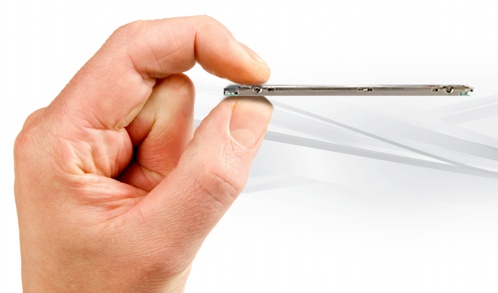Seagate wants to put hard drives into tablets

One of the technologies that facilitated our transition from the PC to mobile post-PC devices is flash memory. While PCs relied for decades on hard drives for storage, hard drives contain moving parts, and as such aren't a good choice for things that we carry around with us, and are definitely not a good idea for things that we throw around.
But Seagate still thinks that there's more life to squeeze out of the aging hard drive technology, and is releasing a new Ultra Mobile HDD. The drive combines a super-slim (5mm) 500GB 6GB/s SATA hard disk drive with 16MB of on-board cache to deliver a peak data transfer rate of 600MB/s, but this drops to only 100MB/s for sustained transfers.

Seagate recommend that OEMs pair the drive with 8GB of flash storage too, and this, combined with Seagate's Dynamic Data Driver software, results in "power consumption equal to that of a 64GB tablet and the performance equal to that of a 16GB tablet - while costing less than either."
To make the drive more robust than your regular hard drive, Seagate have incorporated zero-gravity sensors (ZGS) which provide extra protection when a device is dropped or in freefall, and have added "improved shock and tolerance for gyroscopic motion supports even the intense maneuvers of gamers."
Seagate are also offering two years of data recovery and hardware replacement cover for $30 through its Rescue and Replace program.
According to Seagate, the drive brings "7× more space to tablet applications at a fraction of the cost" in a package weighing only 93 grams.
But there's one drawback to this drive making its way into tablets. While the drive is only 5mm thick, the other dimensions are the same as any regular 2.5-inch notebook drive, which makes it rather big for most tablets.
Another problem is reliability. While having 500GB of storage on tap might be a great selling point, OEMs might be a little uneasy about using a hard drive in case that increases support costs.
There's no word on pricing, or whether any OEMs have adopted the drive.